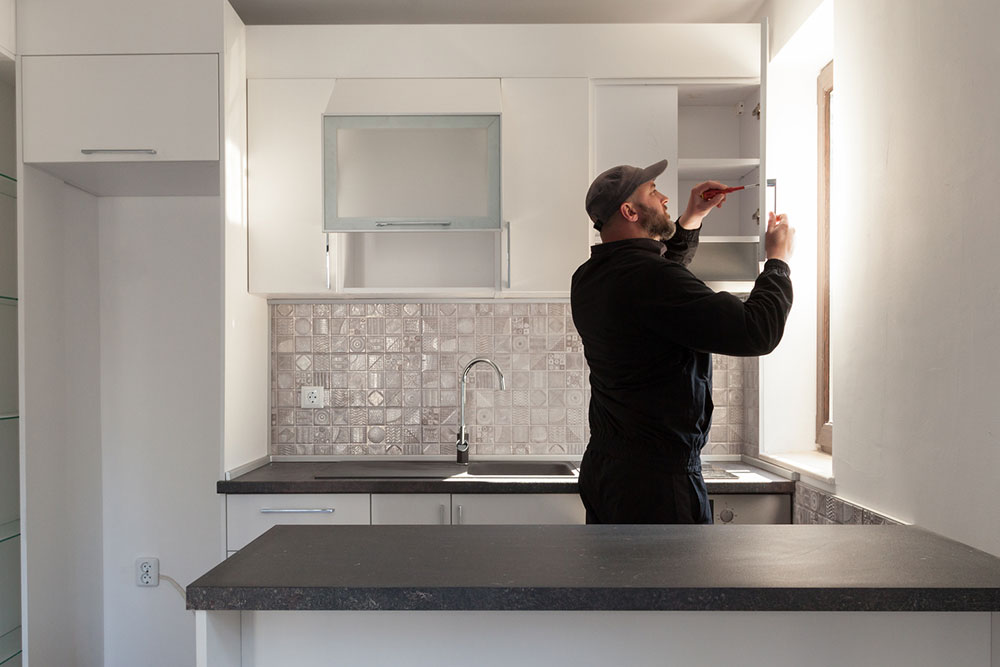7 kitchen remodeling mistakes to avoid

Renovating kitchens every now and then keeps their look fresh and attractive for longer periods. It is often believed that newly renovated kitchens can also inspire chefs to come up with incredible culinary ideas. However, kitchen renovations can be typically expensive, which is why one must get them right in the first attempt. Certain remodeling mistakes can debilitate the look of a kitchen. Here are some of the most common kitchen remodeling mistakes to avoid:
Not setting a budget
Before undertaking any renovation project, the first critical step is to make a budget. One needs to decide what features of their kitchen are most important and worth upgrading. Some people may want more cabinet and drawer space to store their cutlery, while others may want a designated pantry to store more food than the refrigerator can handle. Some individuals may simply want to have additional lighting in their kitchen. Whatever the requirement, one needs to create and stick to a budget so they do not waste a lot of money on the remodeling.
Choosing kitchen appliances after installing the cabinetry
Choosing the appliances after installing the cabinetry is a massive remodeling mistake. Usually, kitchen remodeling involves a lot of measurements and precision tools. So, even a one or two-inch size discrepancy can make or break an installation or the idea of having a space vacant for specific appliances. This is why one must measure the appliances before beginning a remodeling operation. Doing so enables the specifications of appliances to be properly taken into consideration when one lays out everything before a remodeling process begins.
Also, measuring and choosing kitchen appliances before installing cabinets allows people to purchase complementary elements and tools in the kitchen to enhance the look and appeal of the appliance as well as the overall kitchen.
Installing cabinets before floors
As implied above, the order of installation also plays a critical role in making the remodeling operation a success or a failure. One must ideally install the cabinetry after installing the flooring. Doing things the other way around leads to two issues. Firstly, the floor loses its ability to contract and expand, and cupping and peaking become more apparent. Additionally, it is very difficult to remove the floor without damaging the cabinets if the cabinets are installed first. Therefore, one must install the flooring first and then move on to installing the cabinets.
Making the aisles too tight
Kitchen aisles see much more movement and commotion than other areas in the zone. Therefore, one must visualize the aisles to be as wide and spacious as possible. If that does not happen, then the kitchen aisles will just not be wide enough to accommodate all the movement that goes on in a kitchen.
Ideally, an aisle must be wide enough for multiple cooks to go to and fro simultaneously, navigate space without running into each other, and maneuver smoothly through the zone around one another. Generally, making the aisles between 42 and 48 inches wide helps solve several movement issues in the kitchen.
Overloading and oversizing islands
Islands are the tables and storage cabinets that store a lot of essential kitchen equipment but are not connected to walls or other kitchen design elements. They often occupy the central space in a kitchen and form the zone around which people move, forming aisles. However, one must be mindful of how big these central islands could be. If they are too big, they will take up most of the space in the kitchen and make movement difficult. Therefore, one must keep island sizes to a minimum.
Using poor lighting in the kitchen
Kitchens are supposed to be well-lit and generally cold. Poor lighting and dampness often lead to bacterial growth and other hygiene-related issues in the kitchen. Also, unlike other areas in a house, a kitchen does not need accent lighting to highlight specific bits of the property. One must always use the brightest lights for the kitchen to keep it cheery and optimistic-looking.
Not consulting a professional
As much as people would hate to admit it, the common layperson may not have the kind of artistic or designer’s touch to decorate spaces or visualize rooms in the most aesthetically pleasing way possible. Therefore, one should consider consulting a professional designer or enlisting the help of a contractor to kickstart any kitchen remodeling operations in their house. Doing so will result in a cleaner and better-looking kitchen after remodeling.

